Day Trip to Pompeii, Naples, Italy
Pompeii was an ancient Roman city located near modern Naples in Italy. The city was buried under volcanic ash and pumice in the eruption of Mount Vesuvius in 79 AD. 798
Pompeii: 80045 Pompei, Metropolitan City of Naples, Italy
Date Picture Taken: October, 2023
I traveled to Pompeii from Rome using two trains, which took 2 hours and 30 minutes. The last train stops at the front of the Pompeii site.

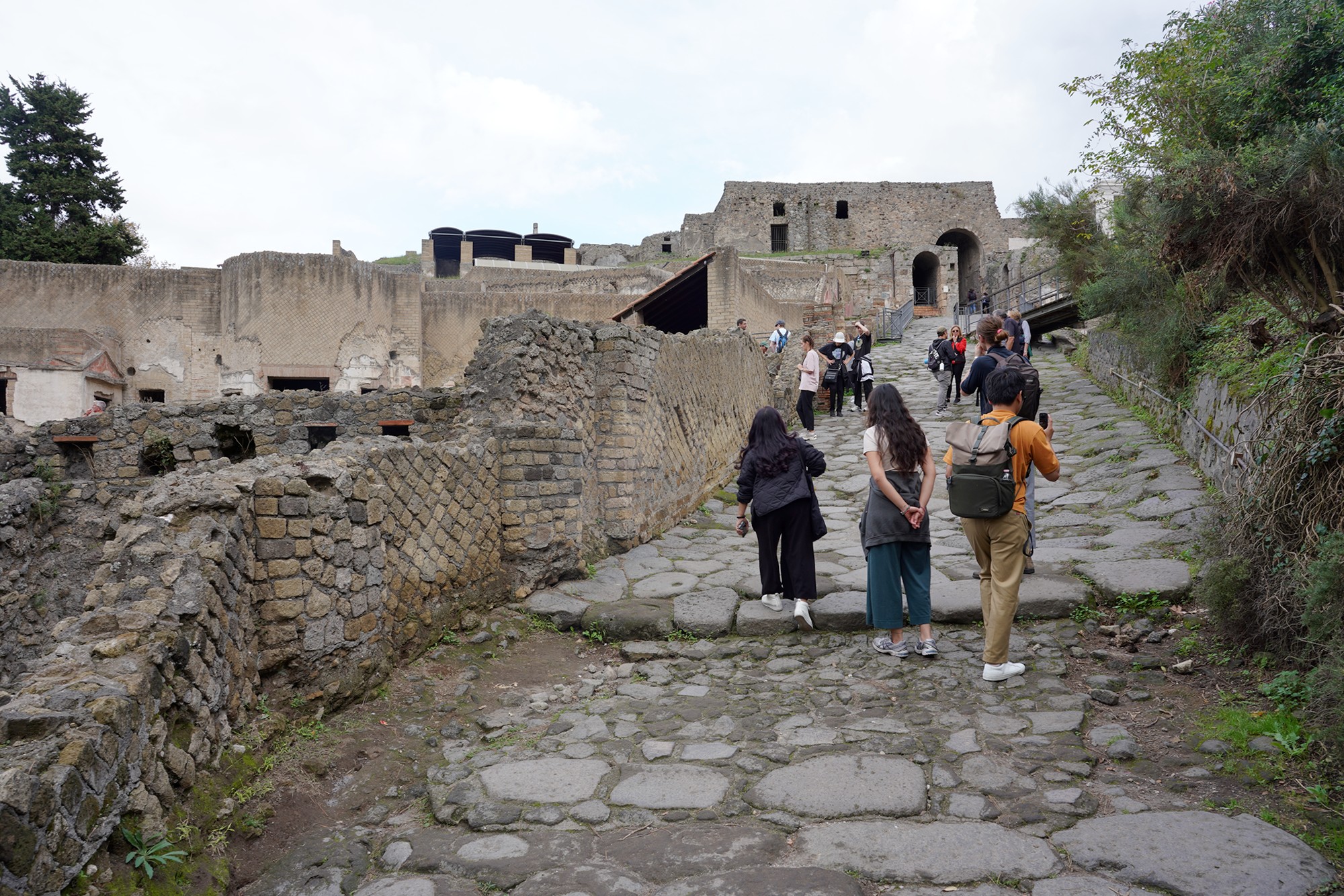
Entering this building
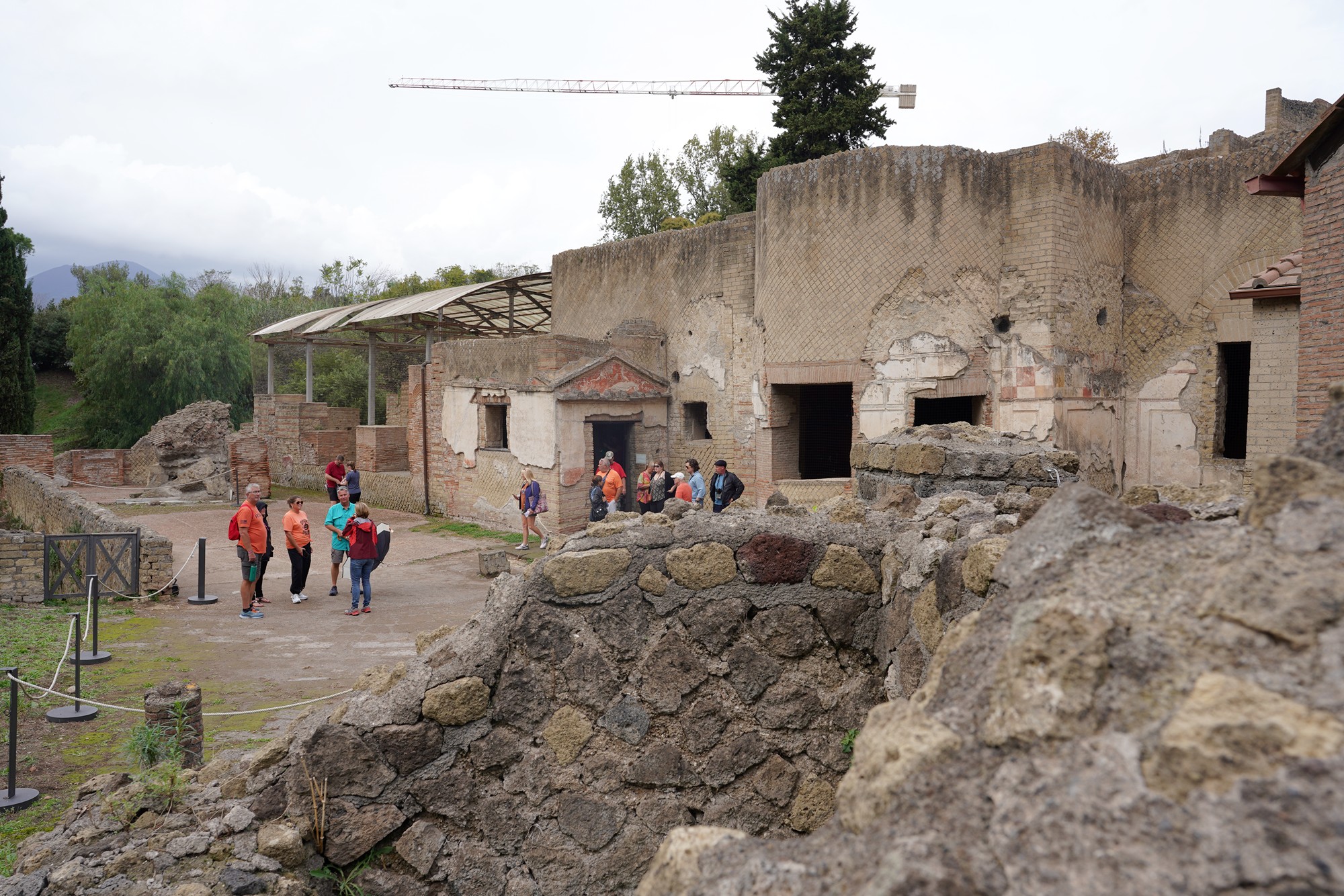





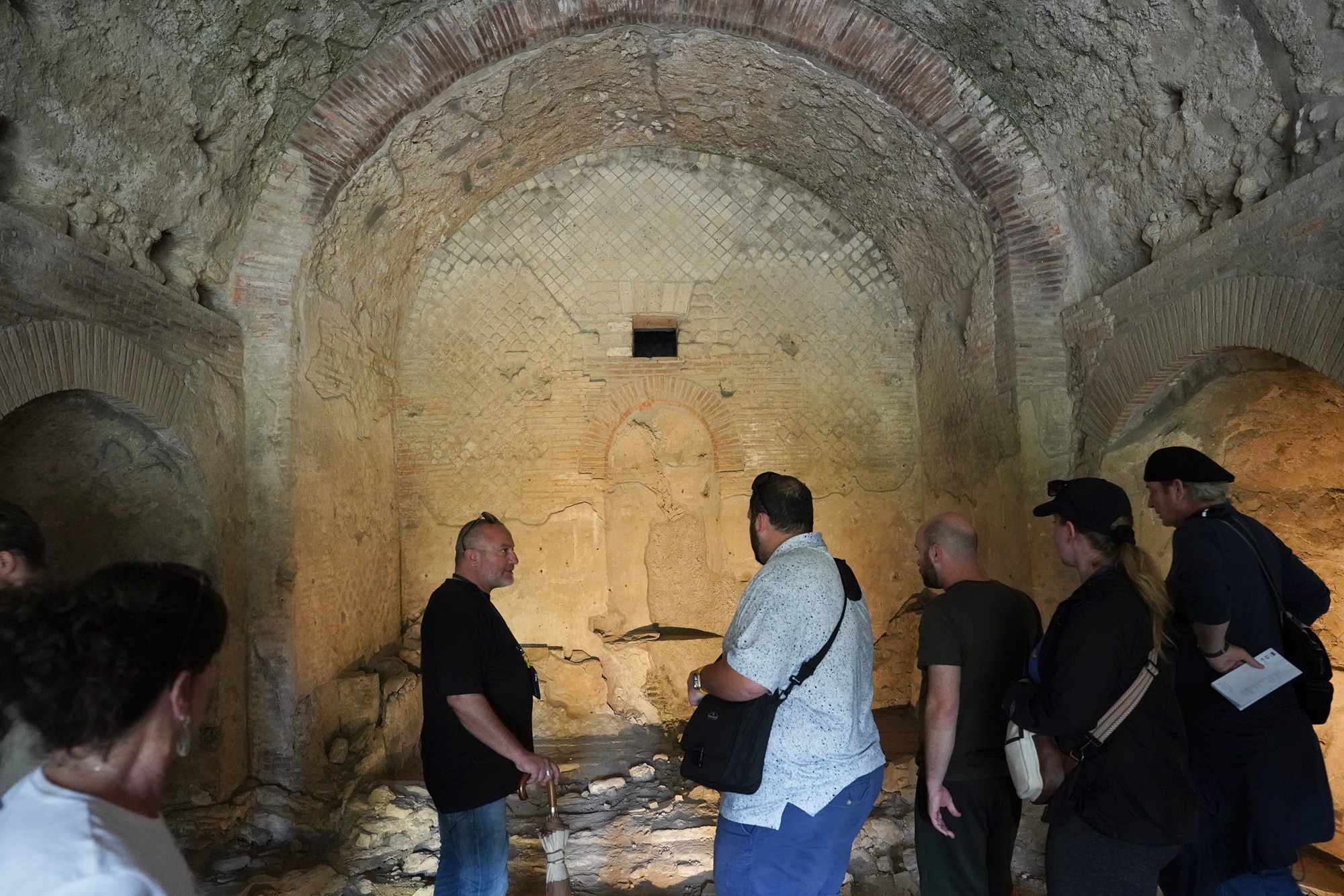



Out from the building and climbed a little hill to the city center.
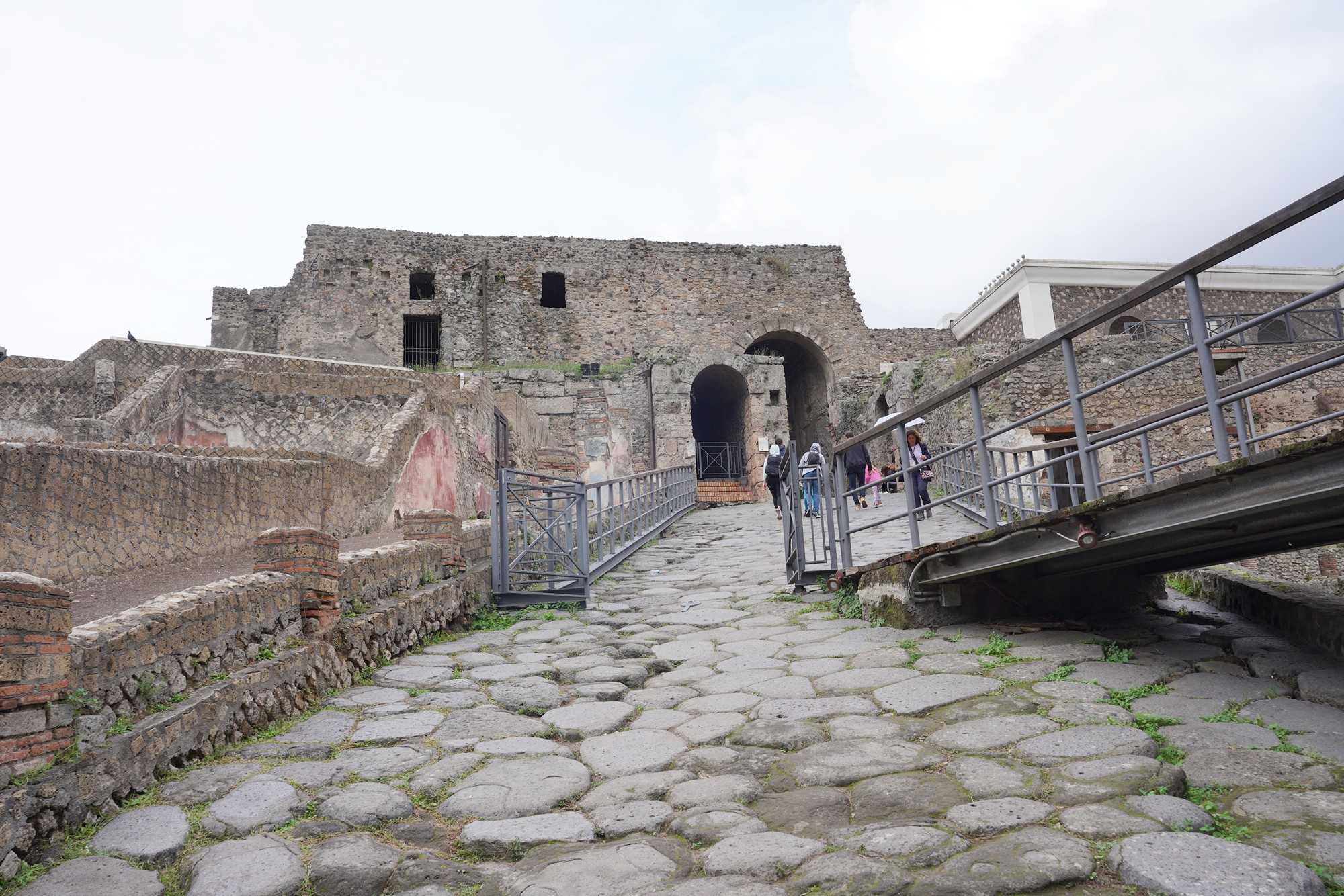
Left side street

The street in front of me

I decided to go straight

The buildings are remarkably well-preserved.

The map of the area

This road leads to the main square, and the building on the right is a temple.

Entering the temple on the right
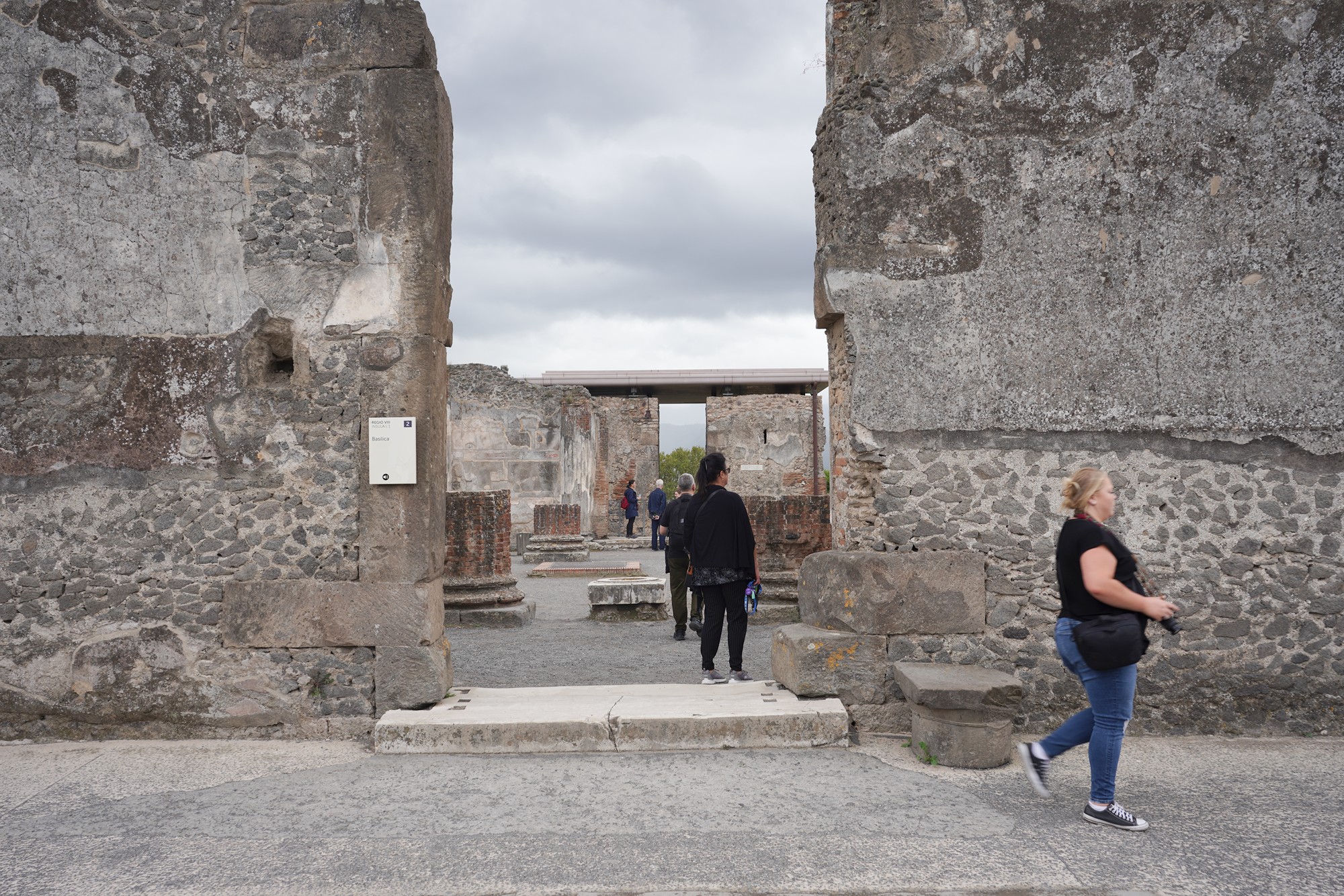
The temple

The right side

The left side toward the main square


The right side again

The main square

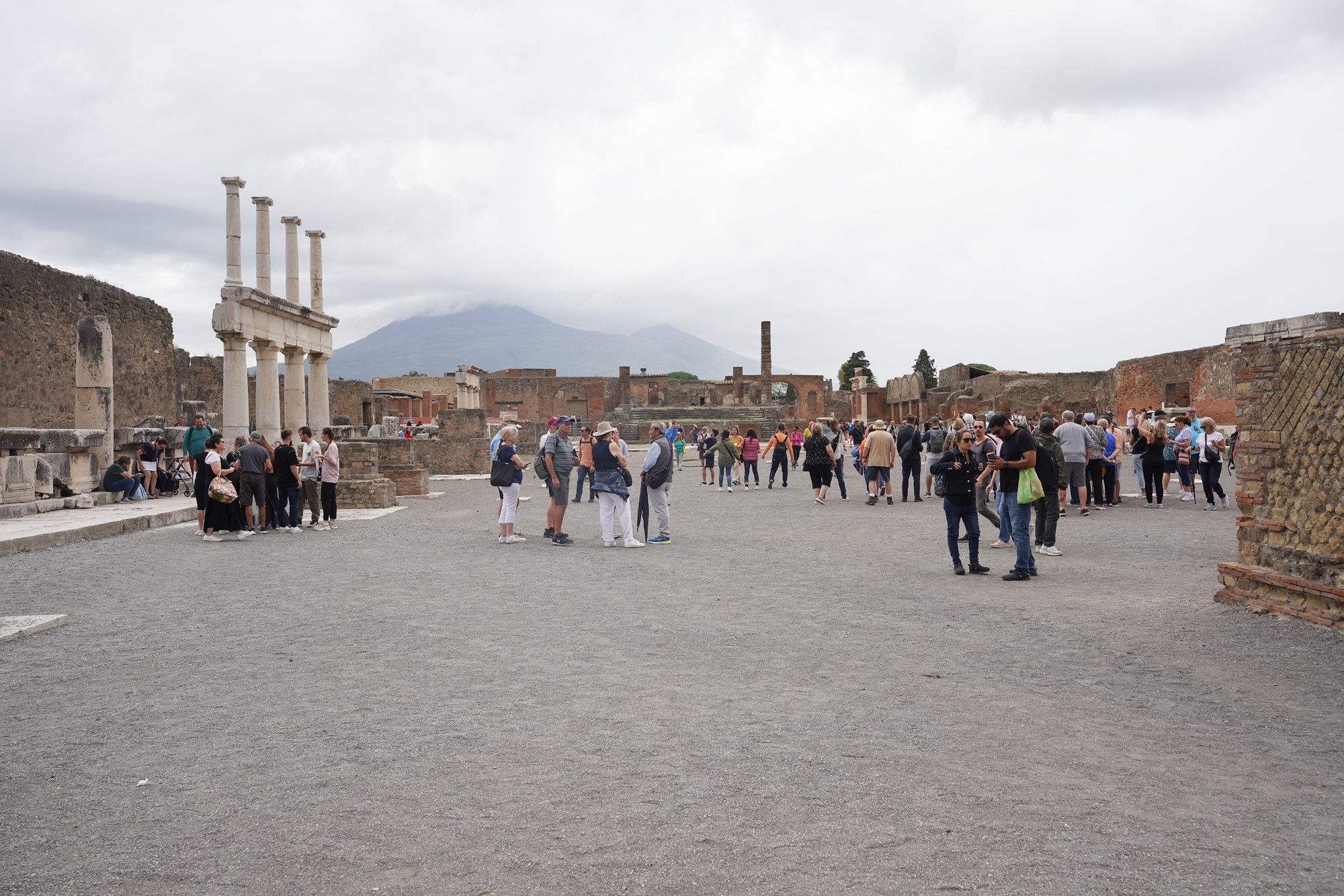
Looking at the temple again


Rediscovery: Pompeii was lost and forgotten for centuries until its rediscovery in the 18th century. Excavations began, revealing well-preserved buildings, artifacts, and even the remains of the city’s inhabitants.



Looking back at the statue — the panoramic view
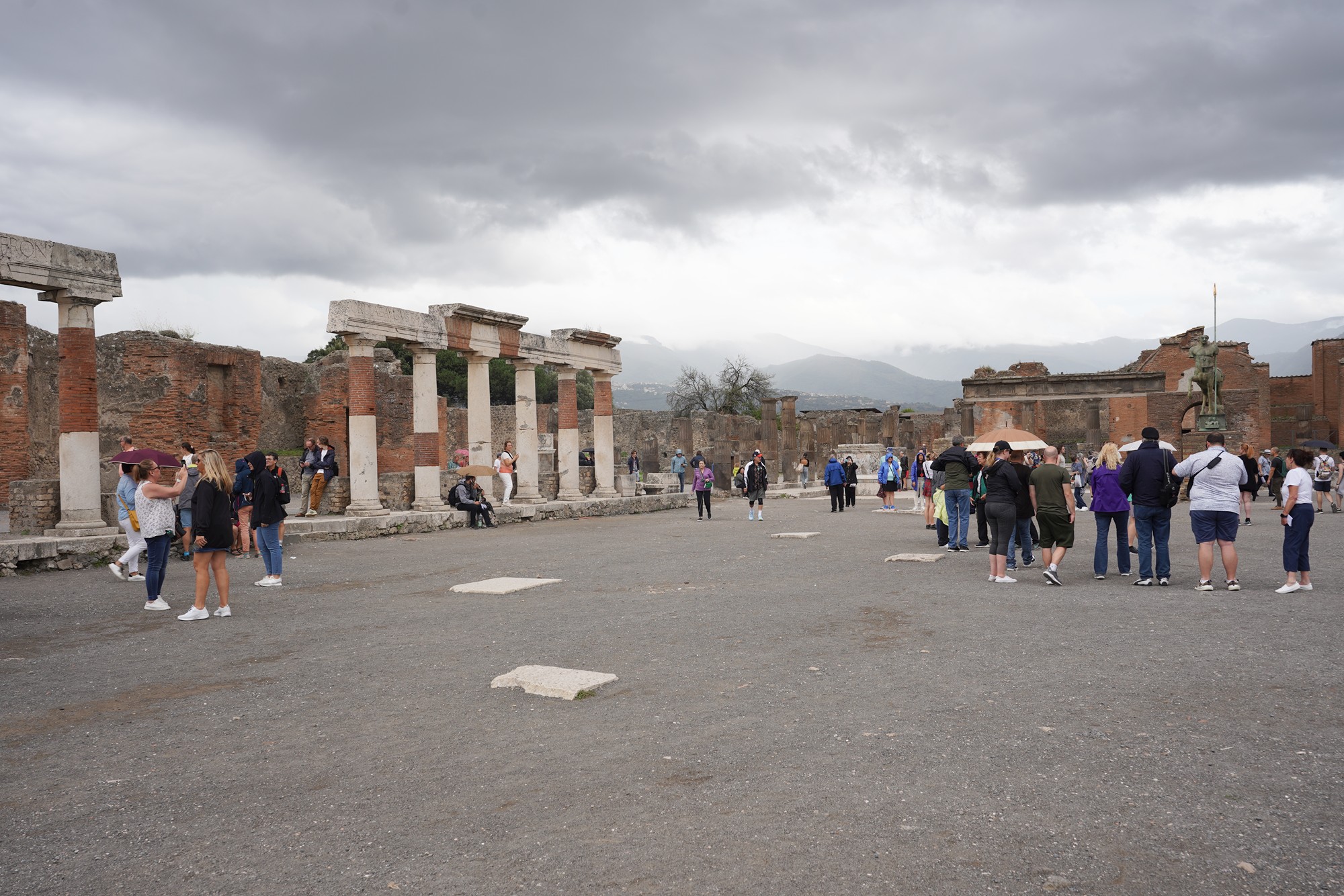


Walking away from the square toward the north side




Preservation: The ash and pumice that buried Pompeii helped preserve the city remarkably well. Archaeologists found buildings, streets, frescoes, mosaics, and even the shapes of bodies encased in solidified ash.

Daily Life: Pompeii provides a glimpse into various aspects of daily life in ancient Rome. The city had theaters, bathhouses, temples, markets, and private residences. Frescoes and mosaics depict scenes of everyday life, as well as mythological and historical events.

I reached a four-way street.




Architecture: The city’s architecture reflects Roman urban planning principles. Pompeii had a grid-based street layout, with buildings designed for both residential and commercial purposes.



The “Casa del Poeta Tragico,” translated as the “House of the Tragic Poet,” is one of the well-known and preserved residences in the ancient city of Pompeii. This house is famous for its intricate frescoes and mosaics, which provide insights into the artistic and cultural tastes of the ancient Romans.
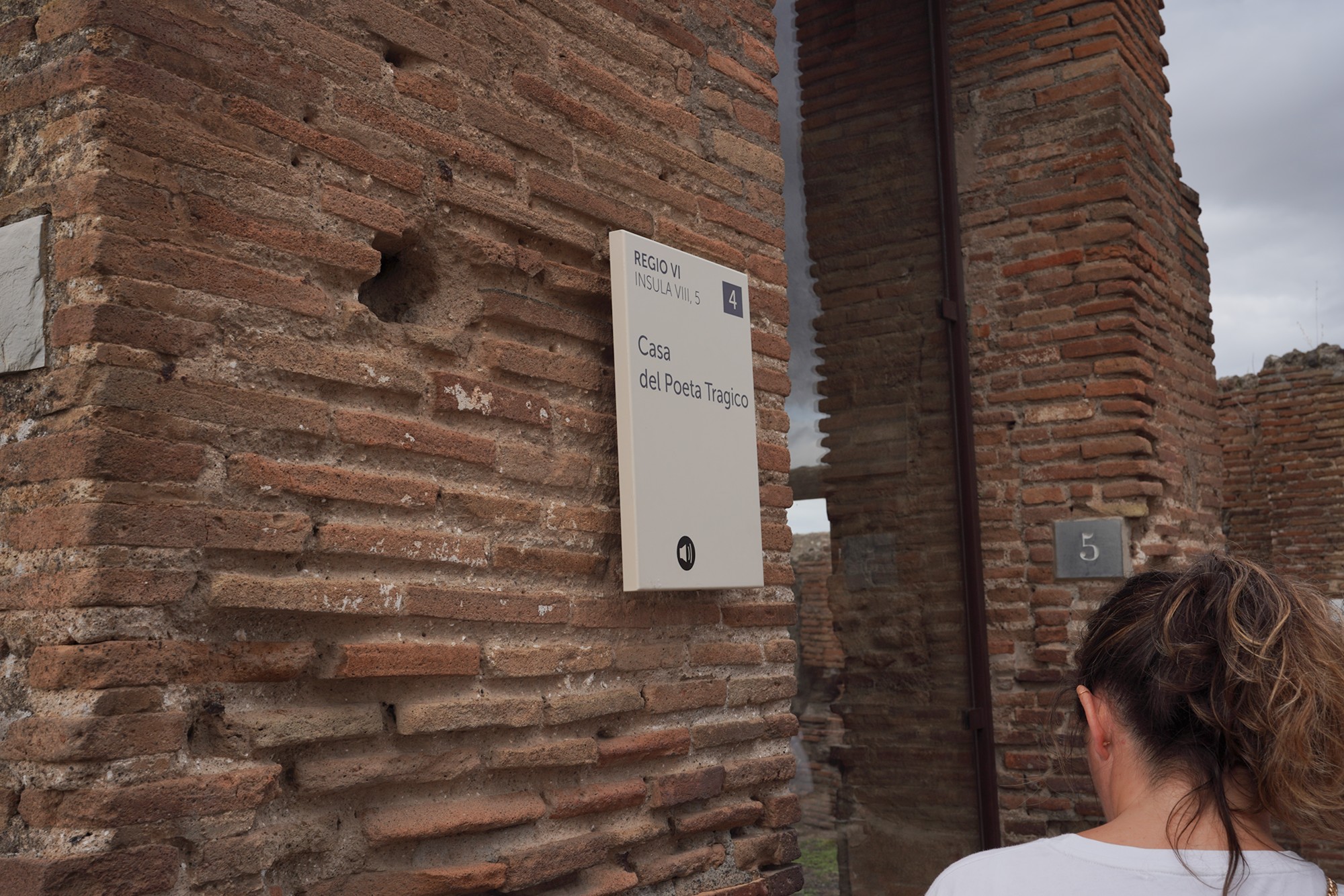
Unfortunately, the interior is blocked.


Came back to the same four-way street



The “Casa del Fauno,” translated as the “House of the Faun,” is one of the most famous and expansive residences in the ancient Roman city of Pompeii. This grand house is named after a bronze statue of a dancing faun (a mythical creature with the body of a human and the legs of a goat) that was discovered on the property. The House of the Faun is considered one of the largest and most luxurious houses in Pompeii, reflecting the wealth and status of its owner.









Out from the house. Considering the time of the city’s existence, this city is enormous, and the layout is similar to the present-day village.







The “House of the Vettii” (Italian: Casa dei Vettii) is another well-known and remarkably preserved ancient Roman. This house is named after its owners, Aulus Vettius Conviva and Aulus Vettius Restitutus. The House of the Vettii is renowned for its elaborate frescoes and decorations, providing insights into the lifestyle of wealthy Pompeian citizens during the Roman Empire.







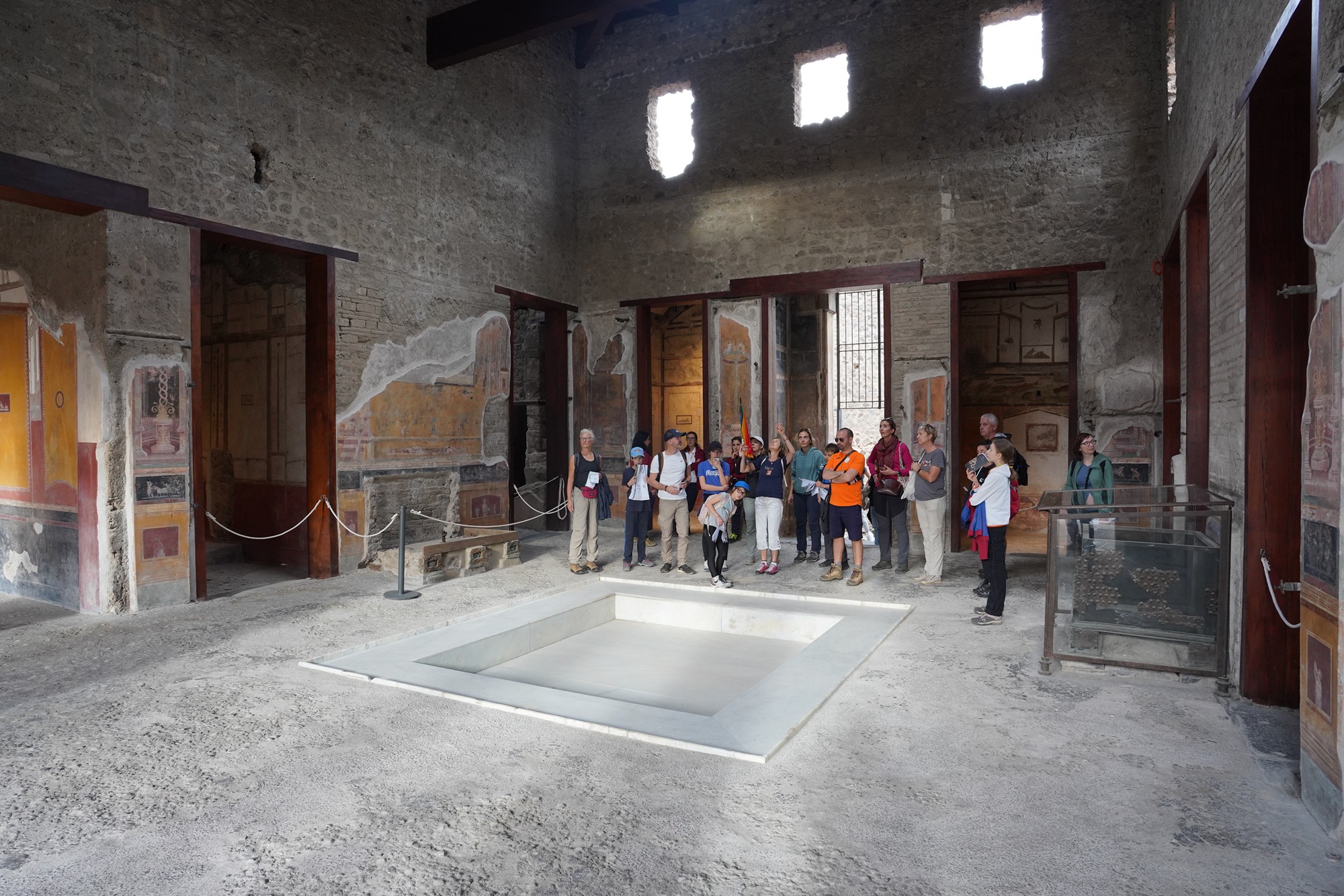







Out from the house


A bakery


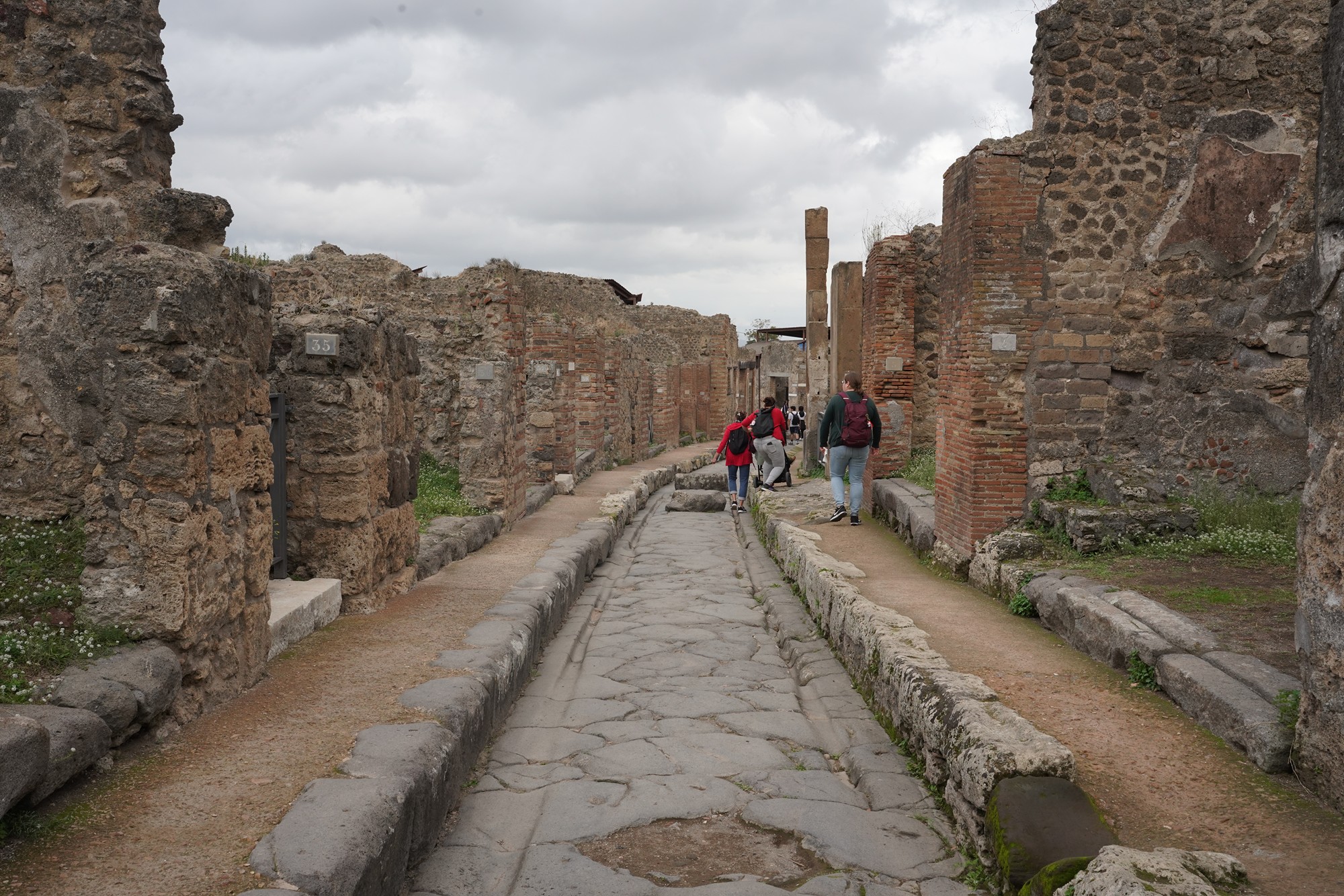

The Casa dell’Orso Ferito is very luxurious, although smaller. It is covered with magnificent floors with mosaics, among which stands out that of a wounded bear, which gives the residence its name. The door to the house was locked.


Back to the street






Entrance to Stabian Baths

The Stabian Baths are one of the largest bathing establishments in Pompeii and were likely frequented by both residents and visitors. The complex consists of the typical elements of Roman baths, including a series of rooms and spaces for various bathing activities.





Back on the street




Pompeii Amphitheatre. The Pompeii Amphitheatre was built around 70 BC, making it one of the earliest Roman amphitheaters. It is a relatively small but well-preserved structure compared to later and larger amphitheaters like the Colosseum in Rome.



Walking back to the main square and then to the entrance to exit the Pompeii site.


Back to the main square




Exiting
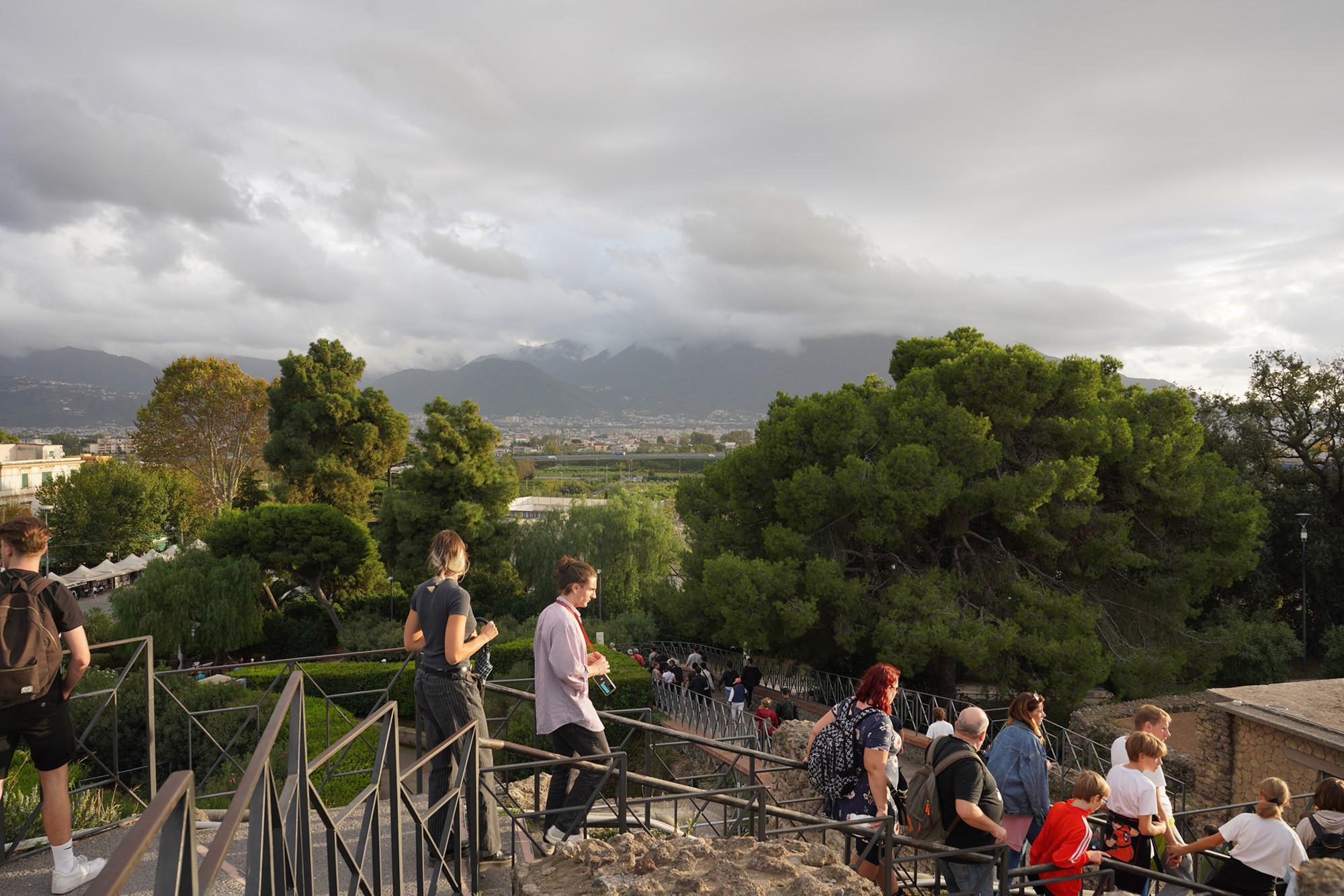
Looking back at Mount Vesuvius that erupted and destroyed Pompeii.

A small museum near the exit
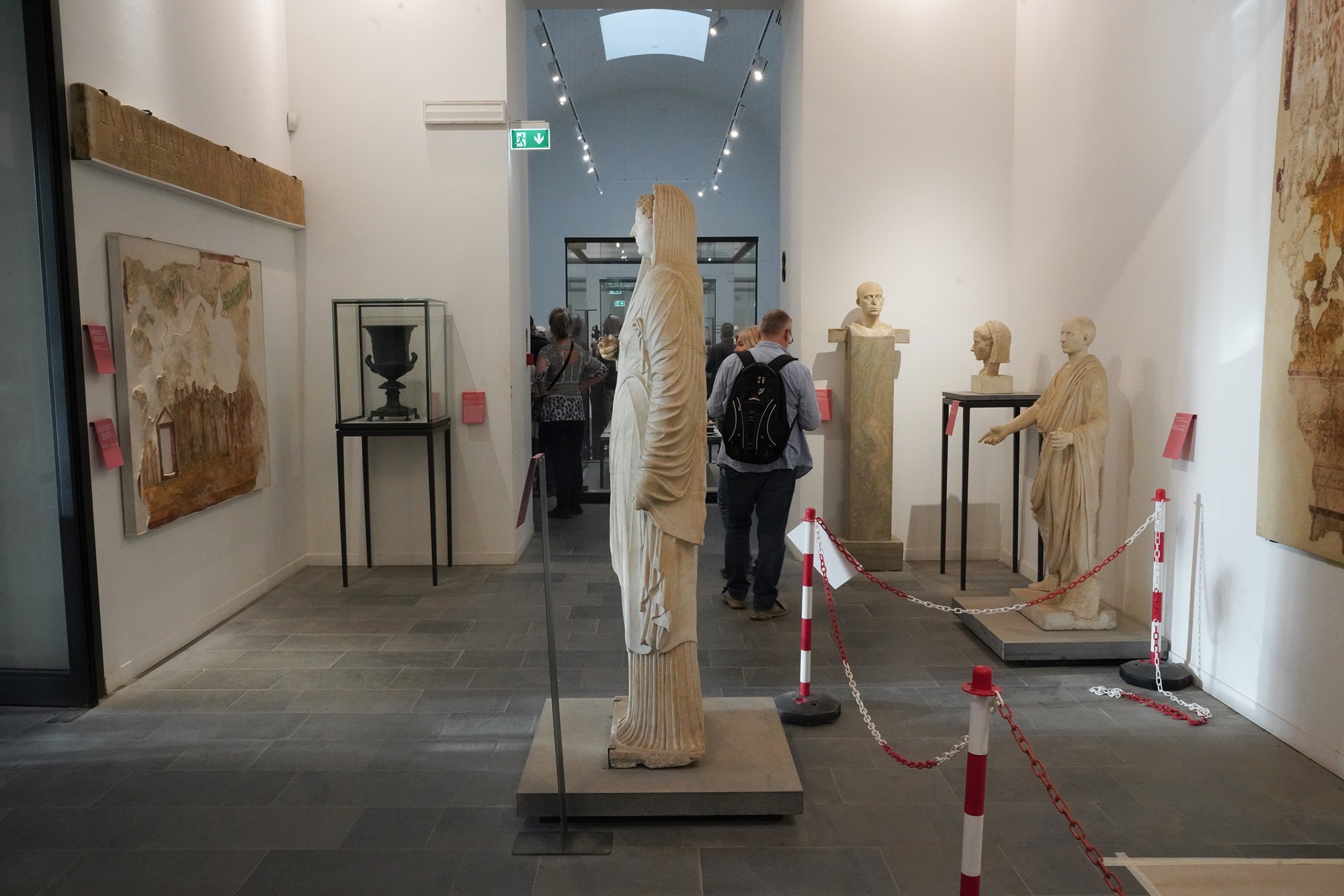







The phenomenon of “stonified” or petrified people in Pompeii is a result of the unique preservation conditions created by the eruption of Mount Vesuvius in 79 AD. The volcanic eruption buried the city under a layer of ash and pumice, leading to the formation of casts of the bodies of people and animals that perished during the event.
These casts were created by filling the cavities left by decomposing bodies with liquid plaster, preserving their final moments in a chilling way.



